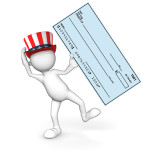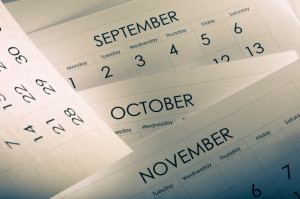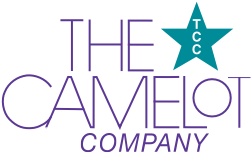The below is the second installation in our series giving companies greater information and knowledge about duty drawback, whether it is a sensible investment for their company and how to go about doing it. The post is authored by Ron Jacobsen, President of Northstar Drawback Consultants, our Duty Drawback partner.

Duty drawback is an opportunity, but one that requires careful attention.
Now that you have decided to explore drawback, have determined that it makes sense and that you have both the recovery potential and documentation required, what to do now?
A close examination of your business model and reality will result in a determination of the type(s) of drawback that you are eligible for. It is quite common for an exporter to be eligible for 2 or 3 types of drawback simultaneously. These programs all result in duty refunds, but are structured and managed separately, even though there will likely be a single database. It is important to set out at the beginning what the stated objective will be so that proper and focused applications can be made to CBP, for exactly and precisely the types of drawback that will be filed.
You can easily find the types of drawback at the Customs website, so I won’t bore you with a lengthy dissertation here, but knowing what is available, and how your core business can make the puzzle pieces fit is an exercise of some considerable effort. Before engaging some clients, it isn’t unusual to explore for days on end the seemingly endless variables involved. We encourage this as it helps with the compliance component, and sometimes yields an entirely new stream of revenue.
For example, during this process of exploration, we will ask clients about domestic sales, even though those sales are not drawback eligible. You wouldn’t believe how many times we discover that a domestic sale later results in an export, due to re-sale. As long as the export is timely and proper tracking is available, these” domestic sales” become drawback eligible and the yield increases proportionally for our client, even though they aren’t the actual exporter. The same is true on the import side meaning that your domestically sourced products that you later export, if imported by your vendor, can indeed become part of the overall drawback program also. To further cloud this for you, if you file substitution drawback, and both source product from a US entity and mix that domestically acquired inventory with foreign duty paid inventory, it is possible to be neither the importer, nor the exporter, nor the manufacturer (for that type of Drawback) and the exported product doesn’t even need to be imported. You can actually export products made entirely in the USA and gain the benefit of drawback and not be the importer, manufacturer or exporter.
Have I lost anyone yet?
We discover all manners of detail that either restrict drawback (such as NAFTA) or expand it, such as factoring in waste and scrap formulas, and sometimes making a small change to the way a company handles some detail or recordkeeping. Simply changing scrap recycling to destruction can mean a huge increase of recovery.
So, once this exercise has been exhausted and you know what the goal is, what then? Since CBP considers all drawback as a privilege (not a right, as is often believed) all drawback participants must make applications to CBP for the privileges being requested. These applications all have a common theme in that they are a series of statements, evidence, and legal commitment to being able to substantiate that the applicant has a viable and legal drawback objective, has the personnel, experience and determination to make it work properly and that CBP becomes convinced of this during the application process. It is common for CBP to request additional information during the application process and the entire process can take 6 months to a year for approval in some cases.
Once approved, applicants become drawback claimants for the privileges requested and are eligible to file drawback claims accordingly. These claims will often encompass up to 3-years of past exports and we recommend that specific time periods be delimited. You may reach back in one big drawback claim for past exports, or you may file incrementally with the oldest first. There are advantages to both techniques but we have found each claimant’s filing technique is dictated by the circumstances at hand.
It is quite helpful to know how CBP “likes” to receive claims and more to the point how CBP does NOT like to receive claims. This experience comes from years of working with each of the drawback offices and knowing how to conduct business accordingly, such as what order the forms and support should be presented.
CBP will always maintain the oversight of every clients program(s), but knowing what assistance the claimant has received during the application process and the claim preparation process carries an important but sometimes invisible attribute. Choosing the right partner can be and often is the pivot point to success. In my firm, we will occasionally be asked to “take over” a badly bungled application process. Once bungled, it’s hard to recover, so be sure you have chosen your business partner initially on the basis of competence, trust and experience.
In the next segment, we will share some stories; will discuss some of the records and documentation that form the basis of a compliant drawback program.


